Welcome to the Glyph and Grok - A weekly blog-letter exploring design, execution, and culture relating to anything played on a tabletop. See the other Game Mastering entries from Glyph and Grok here.
Introduction
My TTRPG work recently has been focused on fleshing out some adventure sites, which has been good fun, but I’m looking to get back into running regular games with a new approach angle. I’d like to focus on engaging overland travel as well as a fun dungeon crawling experience - which means I need more tools. I am pretty settled on the general delving systems provided by Shadowdark, but any regular reader will recognize I have been delving the archives for golden nuggets of arcane power, consuming OSR game material like it’s going to suddenly be erased from history.
I have a vision of “the game” in my mind that I have not successfully run yet. I’m looking to spin up a fantasy world that feels like a real place, but doesn’t consume my soul to operate. I wanna fill it with adventure and have my player’s really leave their mark on the map. I want factions making drama and action, I want large map-altering changes driven by the player characters and have it feel like they’re changing a place with their presence. I’ve attempted this within 5E, but the game system just doesn’t support it effectively. It’s so easy to make an impossible-to-keep-up-with system for yourself even with Stronghold rules from MCDM or Bastion rules from 5.5E. Reading OD&D upcycles and other older school play rules has a lot of ideas that I'm steeping the mind in and looking for inspiration to create new tools for myself and go in a new direction.
I need scalable abstraction of everything from the daily weather to long-term faction movement, and I need functional simplicity so I can have a bunch of them dash boarded at once to make maintenance fun for myself. I am looking for my personal maximum comfort level in balancing practical gaming outcomes with simulation of a fantasy world.
I’ve used tables upon tables for simulating many things, but I’ve recently been enlightened to the existence of Hex Flowers. This is something new to me, though not new in concept at all. The tagline is a "table with a memory" that looks like it could be used to generate or simulate many things I’ve been struggling to figure out a system that feels right for me.
Goblin’s Henchmen created a Hex Flower cookbook and many versions of the thing on DrivethruRPG. Excellent various examples of use of this kind of thing are available, but I want to take it apart and understand it, then adjust the levers to be something I will use for myself.
So today we're looking at Hex Flowers, and at the end there is a link to my first creation in this regard, a weather Hex Flower for the Catastros region of my world setting in progress, Giathos.
The Thing
The first thing I noticed about the hex flower, is that when printed out and utilized, it feels like part of a board game - and anything that feels like part of a game is going to be good for me to trick my lizard brain into leveraging small amounts of work into big impacts are an easy yes to try.
To date, I use many different tables. I love spark tables, encounter tables, I just love tables. But what if you want a table with some personality, or that CAN have a gradual shift between options. Instead of a flat probability of all the options on the list, or a straight bell curve? Here is where something like the Hex Flower can pick up the slack.
When using a hex flower, typically you are rolling 2d6 on a directional hex that determines where you are moving the "I'm here" marker to and thus changes the result of using the table. At any given point on the hex flower, the person rolling has at most 7 options that will come from the roll (six sides plus "stay here") In a 19-hex grid that has a flow from common outcomes to very rare outcomes, you are moving through a network of constantly changing options and the very make-up of the directional hex can be used to give the flow a directional "tendency". The most used case seems to be tending down and to the left. Allowing for wrap-around in the movement, or denying a movement direction in certain cases has a direct effect on what options are on the table, and will increase or decrease the likelihood of surprise outcomes - such as going from a clear and breezy day to a torrential downpour.
I decided to analyze what I saw others doing and build my own from the ground up. For me, this meant creating a list of 19 options escalating from mundane to catastrophic weather occurrence. I also wanted the table and the catastrophic occurrences to be useful in any season, and I wanted landing on hex 19 to have a lot of variability swinging from just bad to really catastrophic - so I built a 2D6 table with a bell curve that tended towards just a seasonal extreme but left the opportunity for truly heinous things to occur.
Once my options were laid out, I wanted to hone in on the feel of moving across the hex flower. I cannot put it into words, but I have an irrational response to rolling the die and then not moving the location. For some reason staying in the same location is upsetting to me. I still wanted this to be possible, because sometimes the weather just needs to kinda be stable for a bit, but I only wanted a single outcome on the 2D6 roll to be that - having more than one outcome just made it seem like it was the result of every roll for me.
Using the above values, I picked and chose which results I wanted arranged around the directional hex and created a kind of "probability heat map" that had the highest probabilities of going down and to the left - tending to fall towards hex 1.
I also did not want to have movement from Hex 19 to Hex 1 and vice-versa, thus I block those movements from occurring. I allow wrap around in all other cases, so you still get some interesting variability and sometimes a storm just rolls in and sometimes it just disappears. I'm ok with that.
Thus, the Catastros Weather Hex Flower is born. Try it yourself by downloading and printing a copy from ITCH.IO here and throw me a buck if you like it. Each day, roll on the table, and move a marker and that's the weather for the day.
Conclusion
I am excited about the prospect of a new tool in the tool box and it is already leading me to other ideas. This doesn't work for capital city layout the way I want to do it, but this certainly looks like it will work well for filling out sub-hexes of my regional map as my players explore it - or during prep I can quickly bang out a whole 6-mile hex's worth of sub hexes. This is one of the next things I'm working on, but the Hex Flower tool itself I think will become a common use tool at my table. Even if only for weather, I like it a lot.
What do you think? What awesome tools have you liked using that I can check out? Leave a comment!
Thank you, dear reader!
Please like, share, and comment your thoughts.
Till next time!




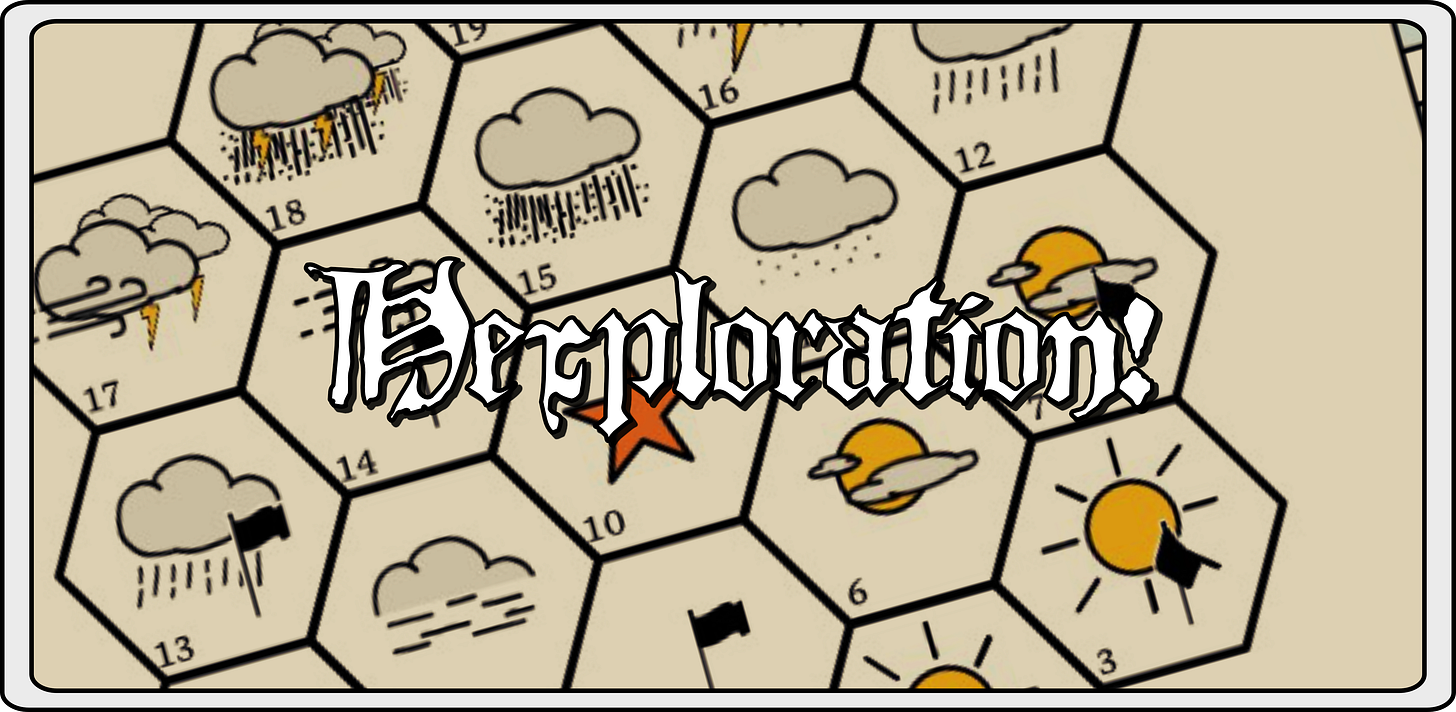
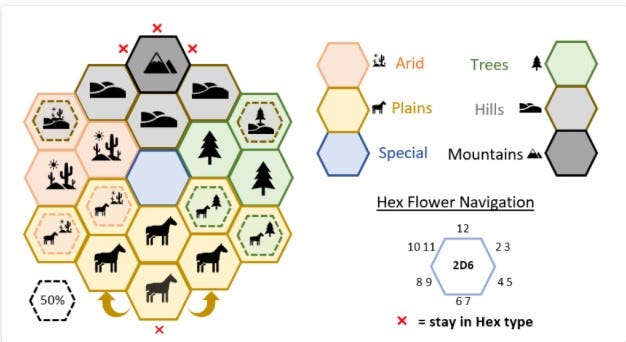
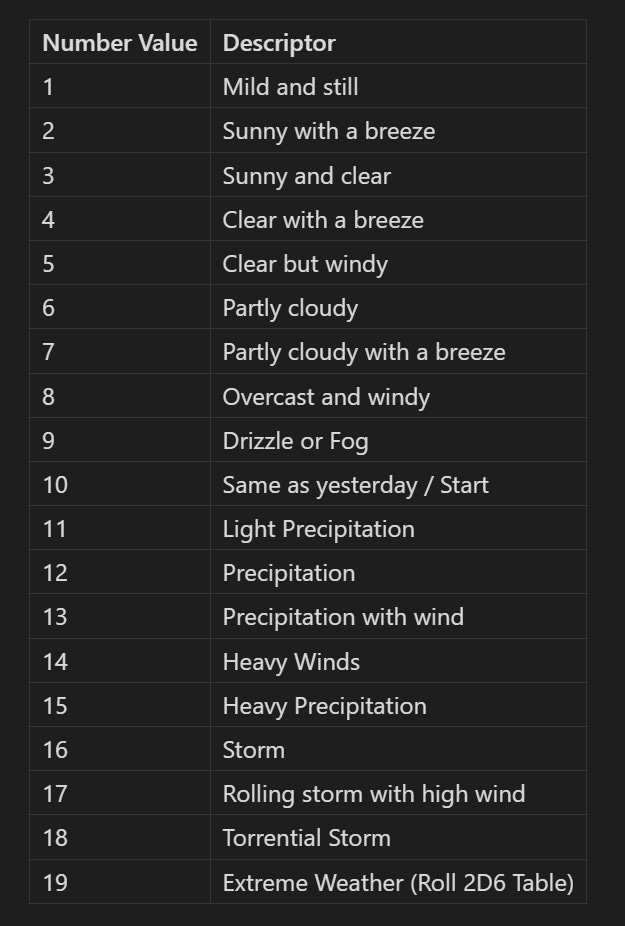
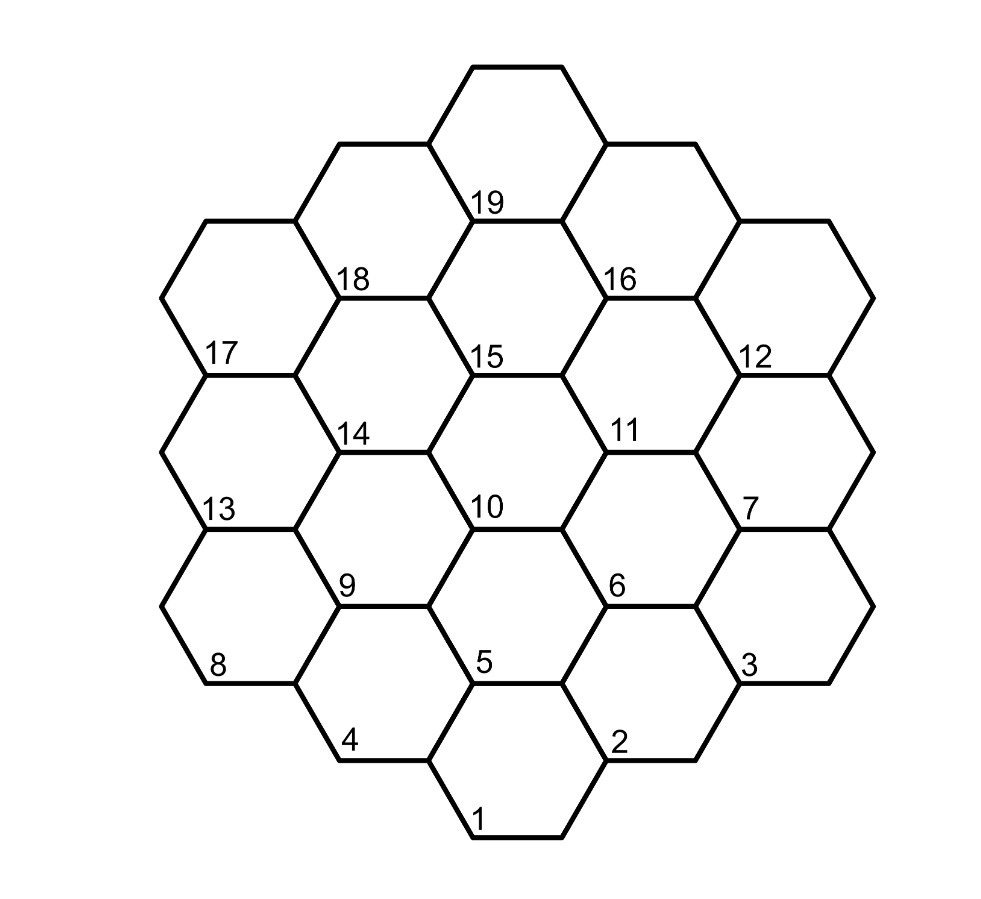
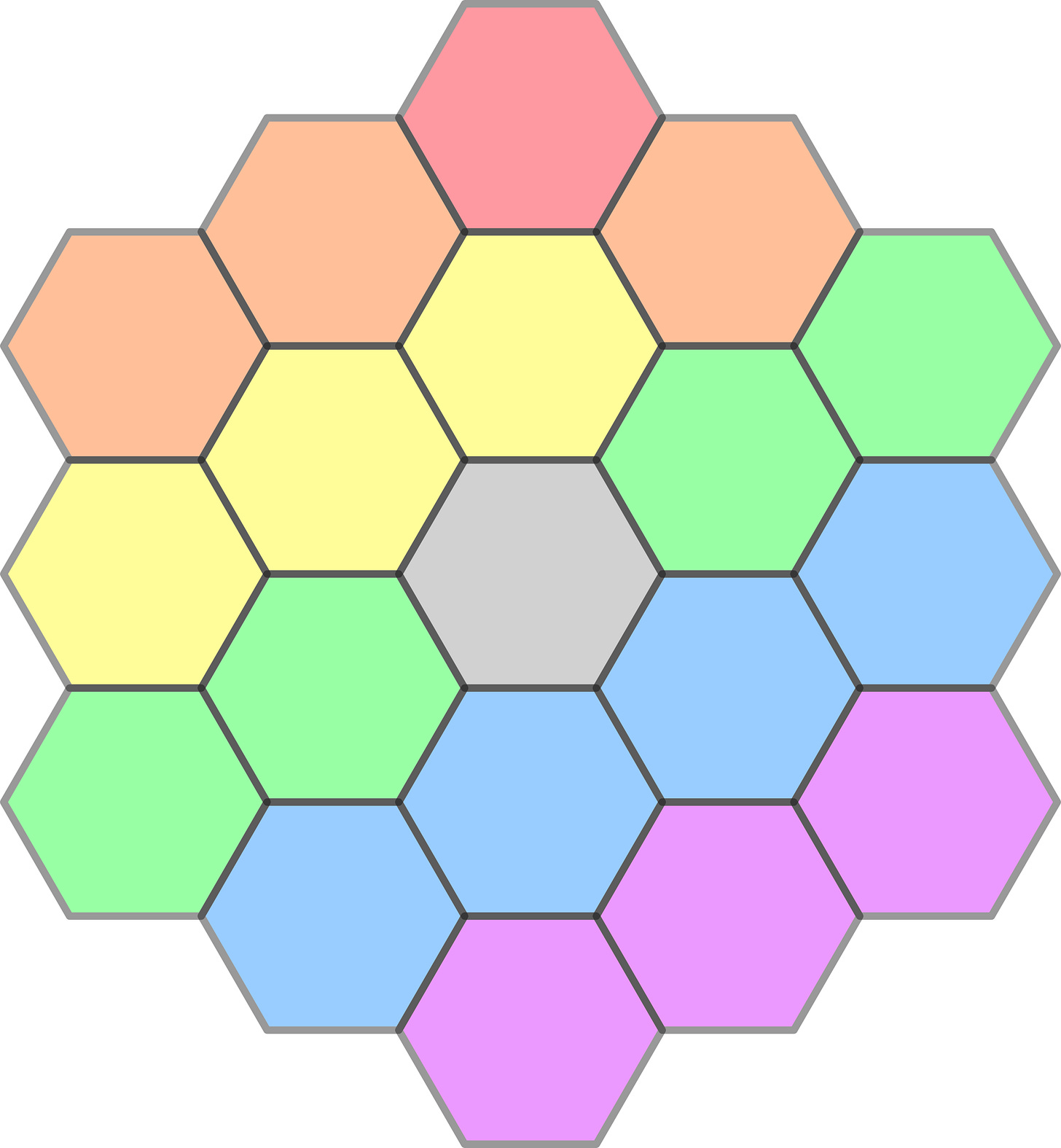
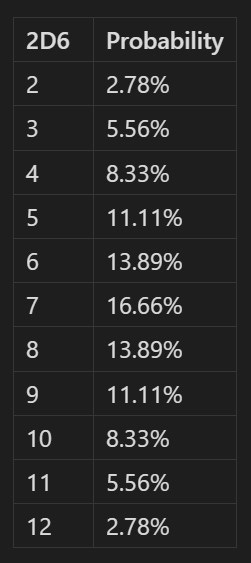
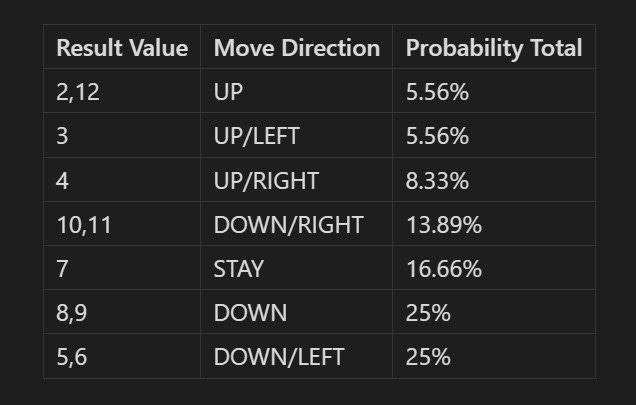
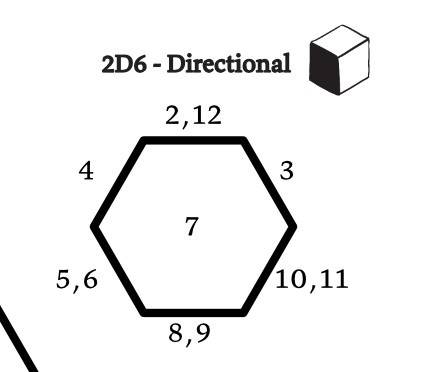
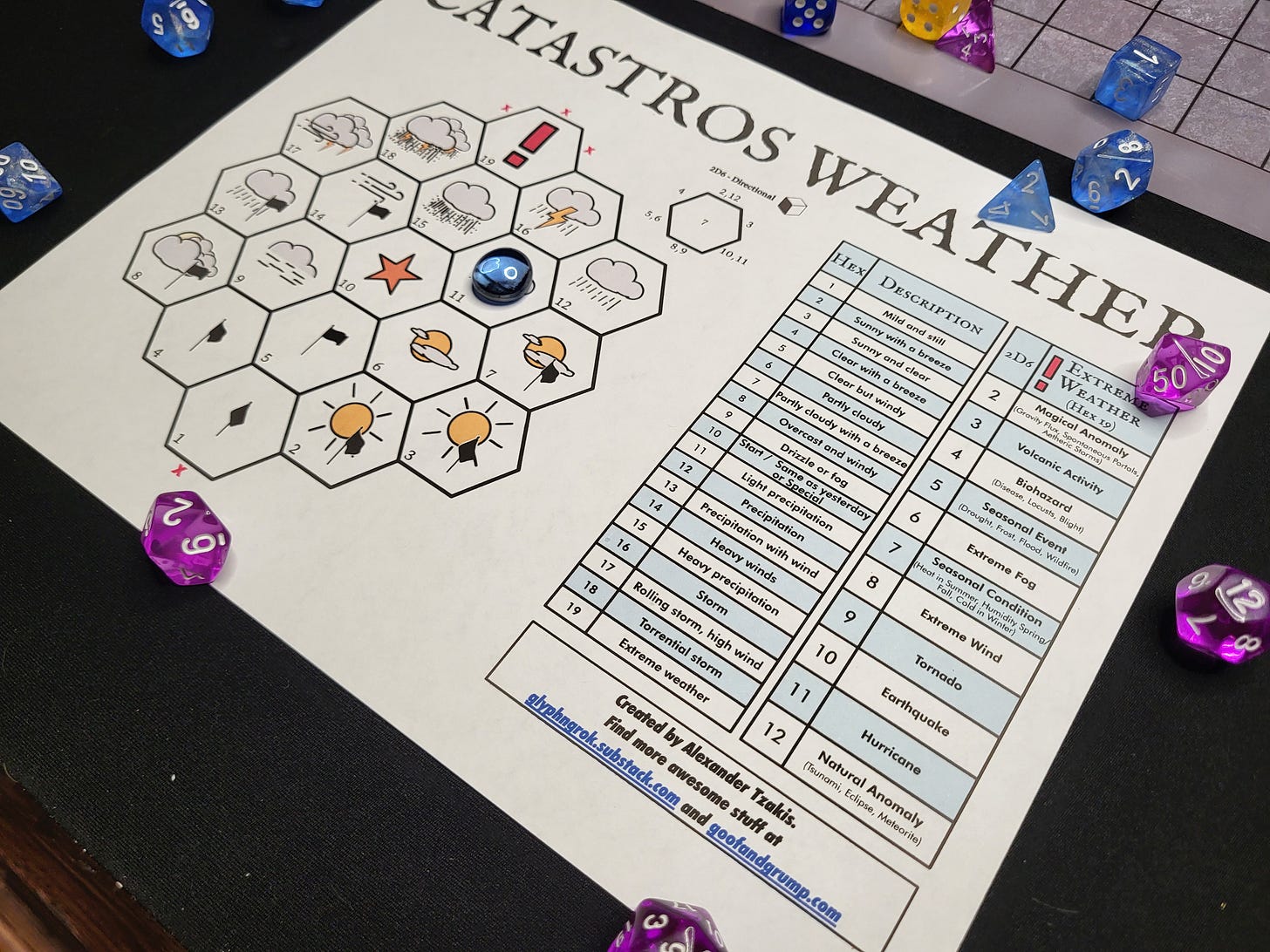

When leaving an edge hex in a "wrap around" where does this send you?
I grabbed my copy. I have it handy, right next to my copy of Catastro's Rookery.